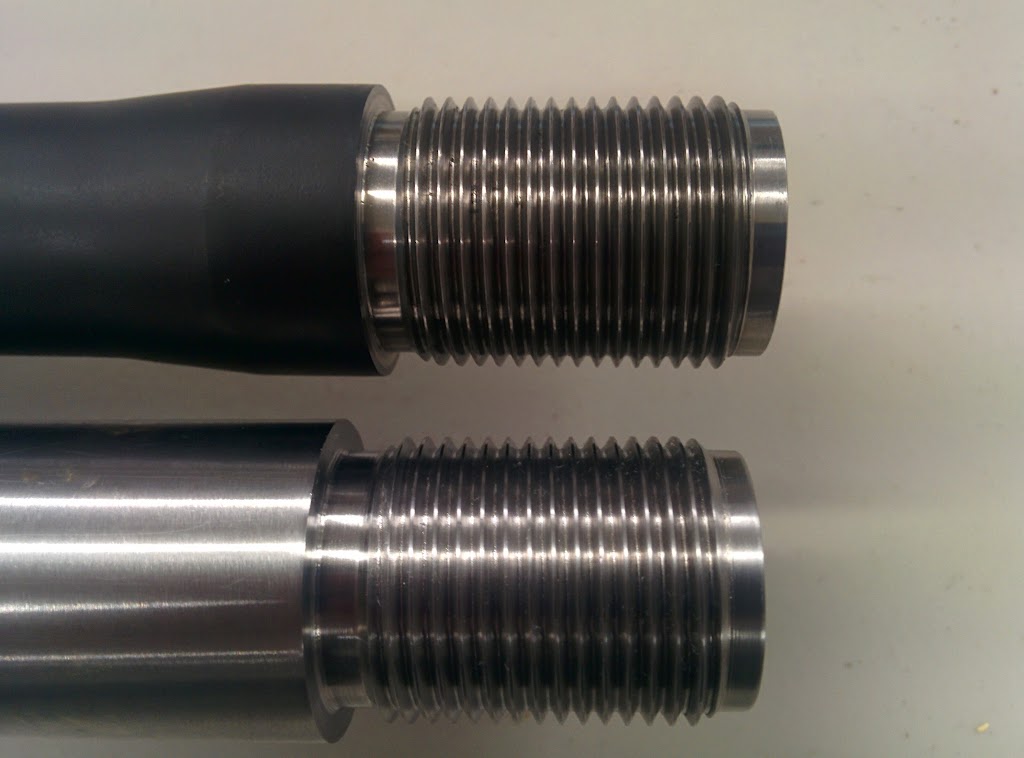Noted above is a concern on ending the threading pass. When we thread a barrel tenon the cut pass must stop at a shoulder. Some advocate machining a groove to stop the cut in. With the tool retracted If you will move the threading tool to where you want it to stop the cut then, with a dry marker, draw a line on the bedway at the left edge of the carriage wing. Then when making the threading cuts, instead of watching the tool tip, watch the carriage wing as it approaches the mark you made, use that as to where to pull the cutter out.
Practice this method for a few passes, with the tool retracted, to see how this works for you.
Left hand on the cross feed dial, right hand on the half-nut handle.
.
.
I can get this done with a dial indicator aginst the saddle on the ways; can usually stop within .005" or less. I thread with AR inserts and don't gotoo fast.



